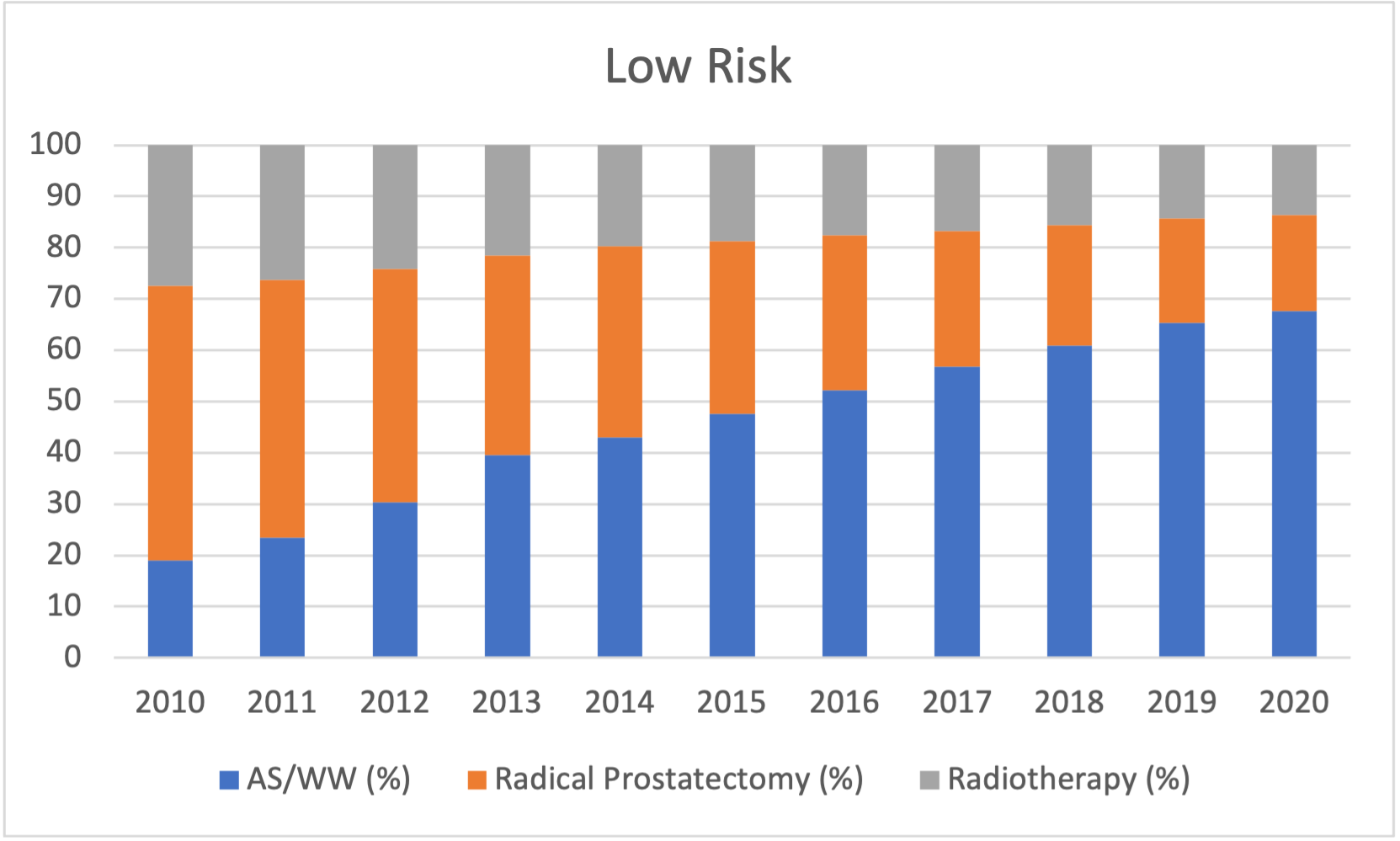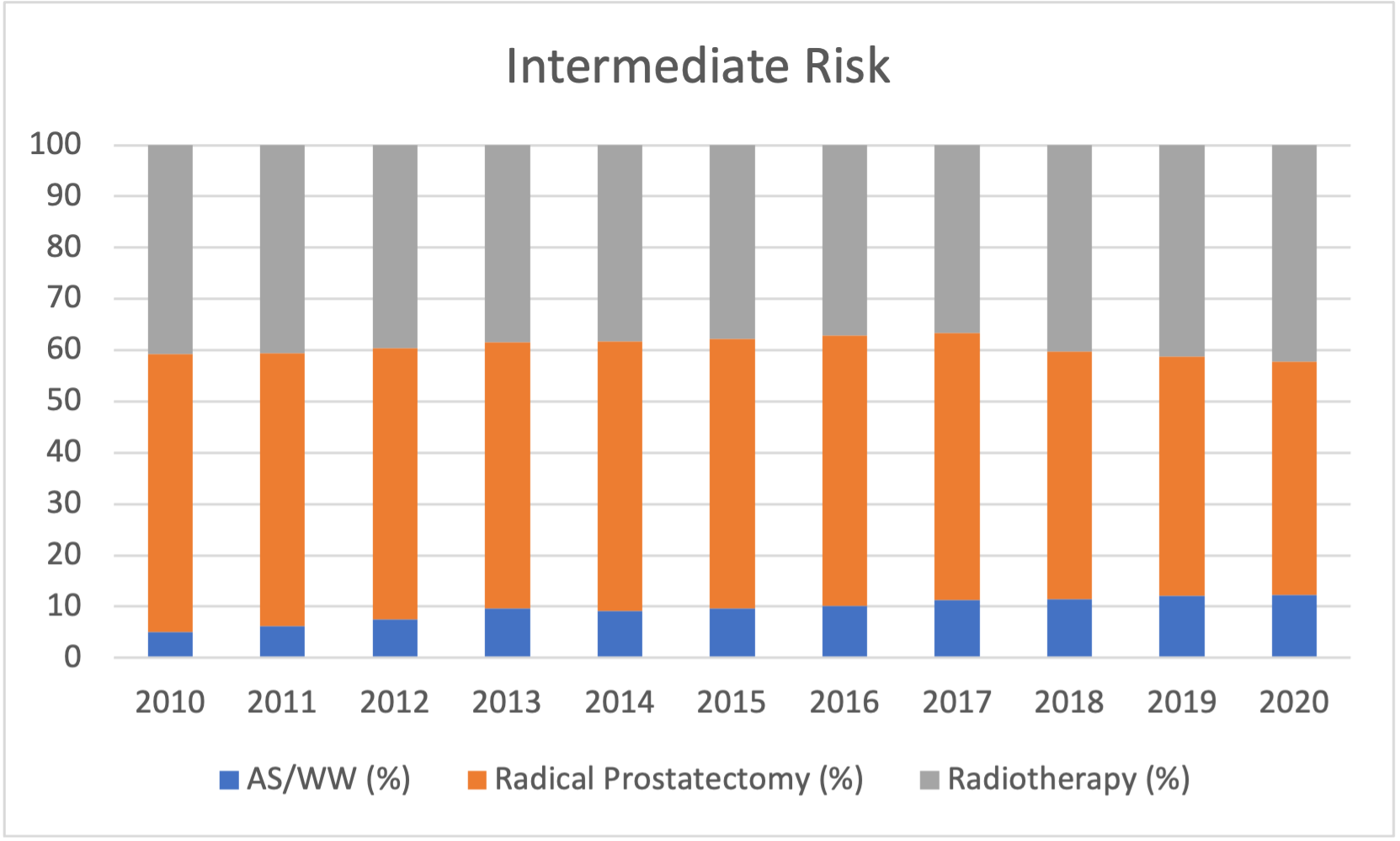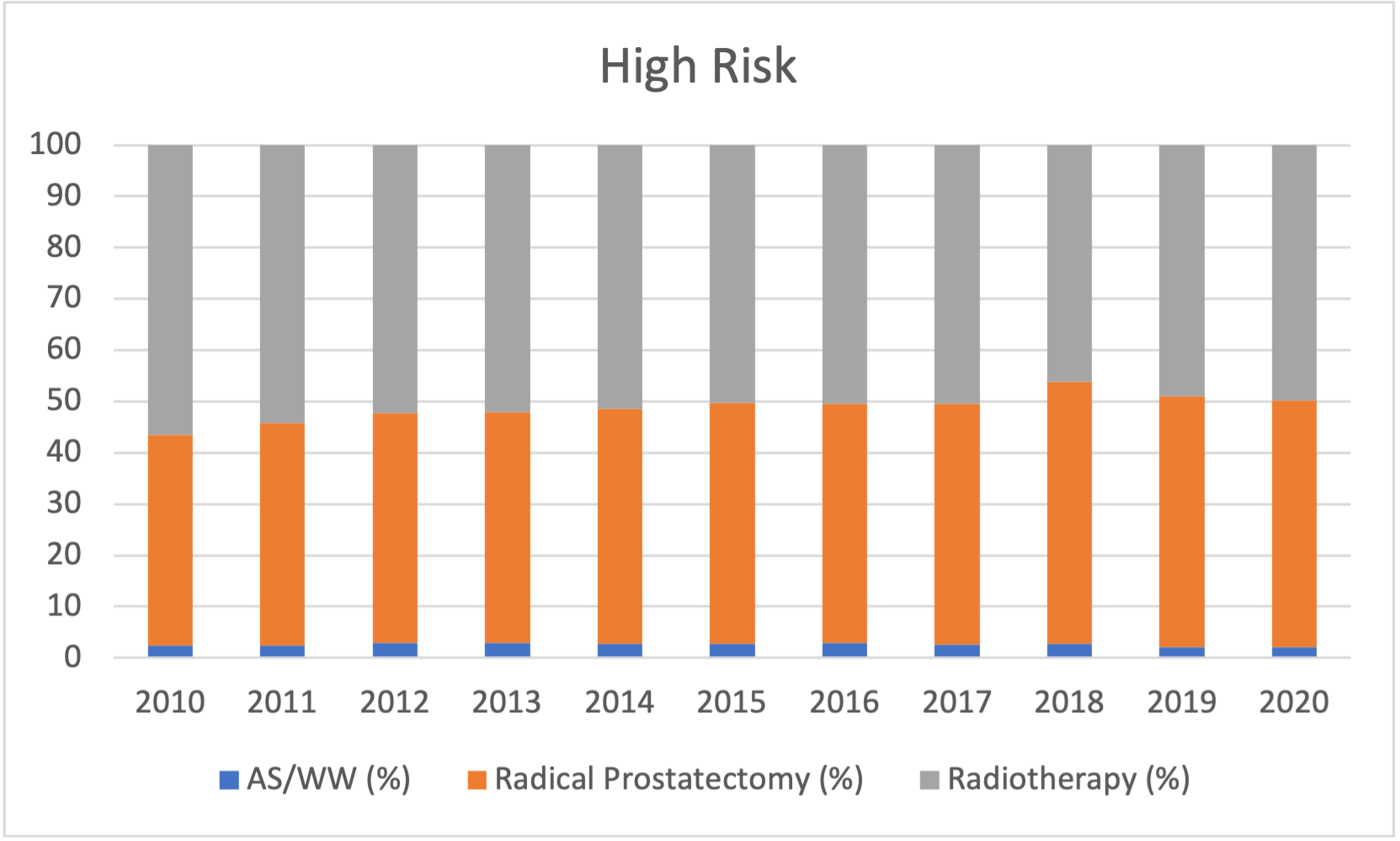Introduction: Although active surveillance (AS) is now accepted as the preferred strategy for patients with low-risk prostate cancer, comparatively little is known about contemporary trends in the use of AS among those newly diagnosed with intermediate risk disease in the United States.
Methods: We queried the Surveillance, Epidemiology and End-Results (SEER) Prostate Cancer Active Surveillance/Watchful Waiting (AS/WW) dataset to identify patients with localized prostate cancer diagnosed in 2010 through 2020. We examined time trends in the use of AS/WW versus radical prostatectomy and radiation therapy by clinical risk strata, focusing on those with intermediate risk disease. Multilevel logistic regression was used to examine patient clinical and sociodemographic characteristics associated with use of initial AS/WW versus definitive treatment.
Results: We identified 455,761 patients diagnosed with prostate cancer during the study period. There were significant increases in AS/WW among low (18.9% to 67.6%, p<0.001) and intermediate (5.0% to 12.3%, p<0.001) risk patients between 2010 and 2020 respectively. Among intermediate risk patients in 2020, AS/WW ranged by state level from 2.4 % to 17.8 %. Increases in AS/WW among low-risk patients corresponded with declines in radical prostatectomy, RP (53.5% to 18.8%, p<0.001) and radiation, RT, (27.4% to 13.5%, p<0.001). However, in the intermediate risk subset, declines in treatment corresponded to decreased use of RP (54.2% to 45.4%, p<0.001) without significant decreases in RT. AS/WW was associated with Gleason grade group 1 disease (OR 1.257, 95% CI 1.252-1.262) and lower PSA.
Conclusions: Conservative management has increased among patients with intermediate risk prostate cancer but varied significantly by geographic factors.
Graphs:
Graph (1): Trends of use of AS/WW, Radical Prostatectomy, and Radiotherapy in the low risk group

Graph (2): Trends of use of AS/WW, Radical Prostatectomy, and Radiotherapy in the intermediate risk group

Graph (3): Trends of use of AS/WW, Radical Prostatectomy, and Radiotherapy in the high risk group
